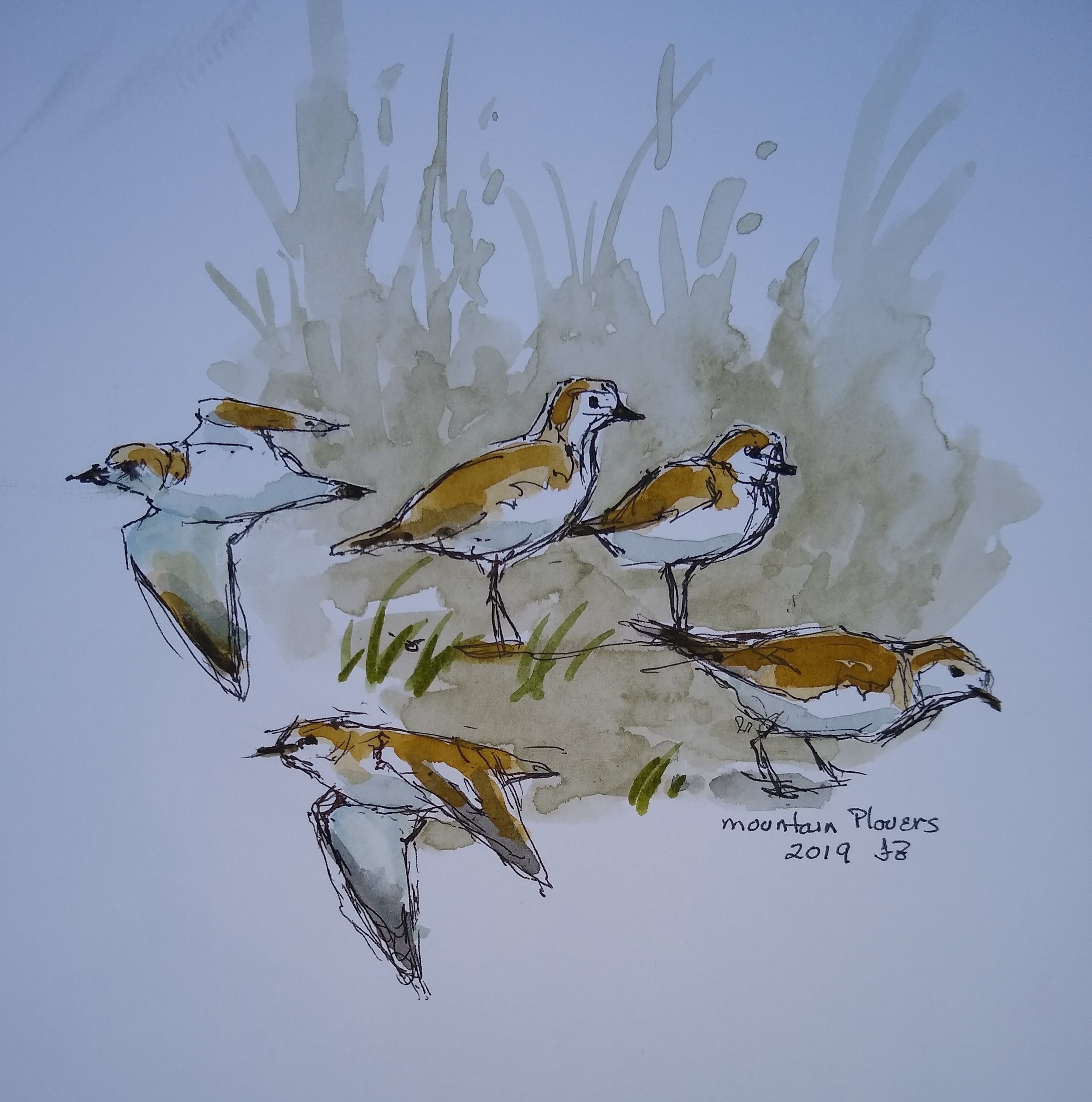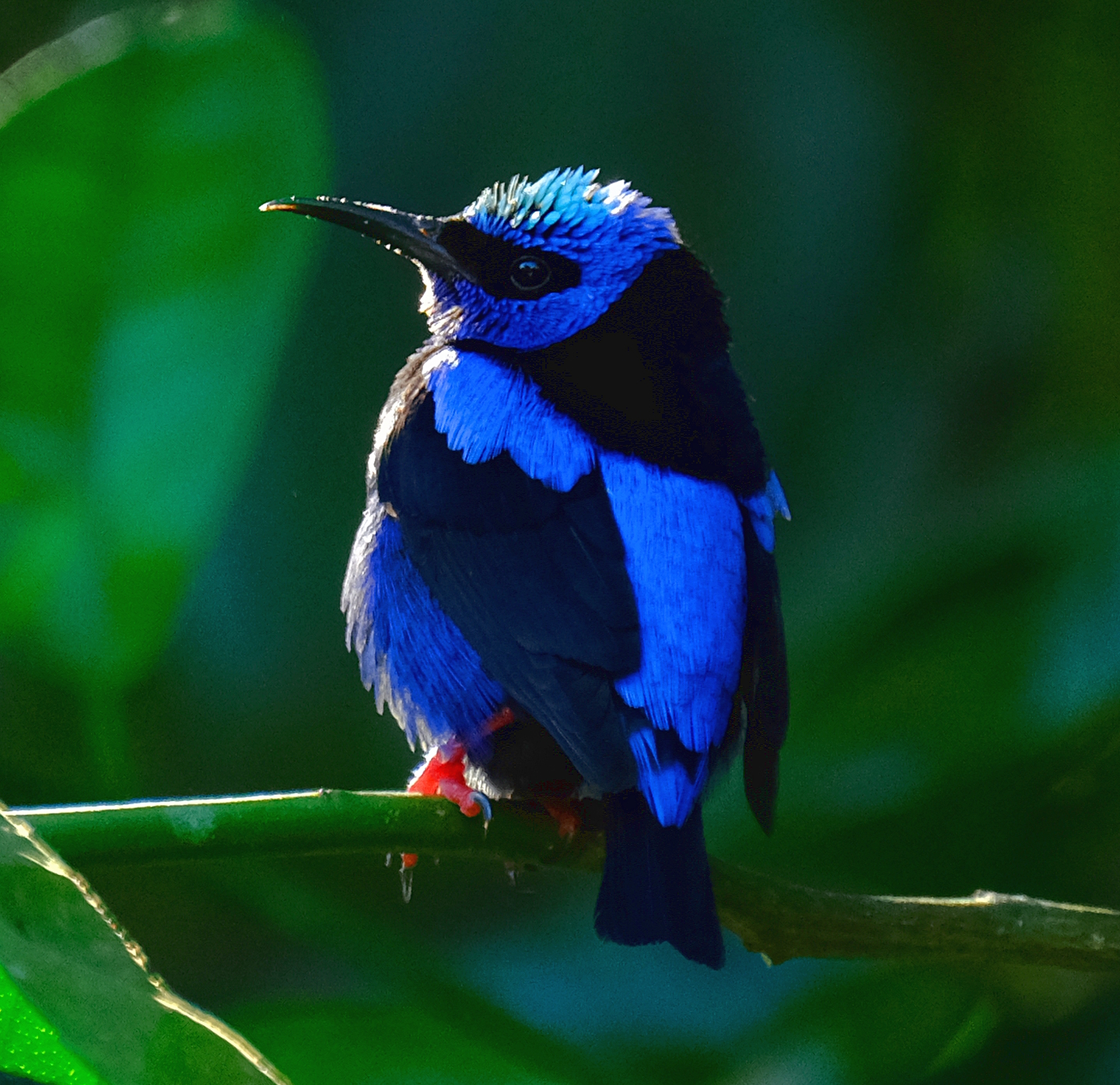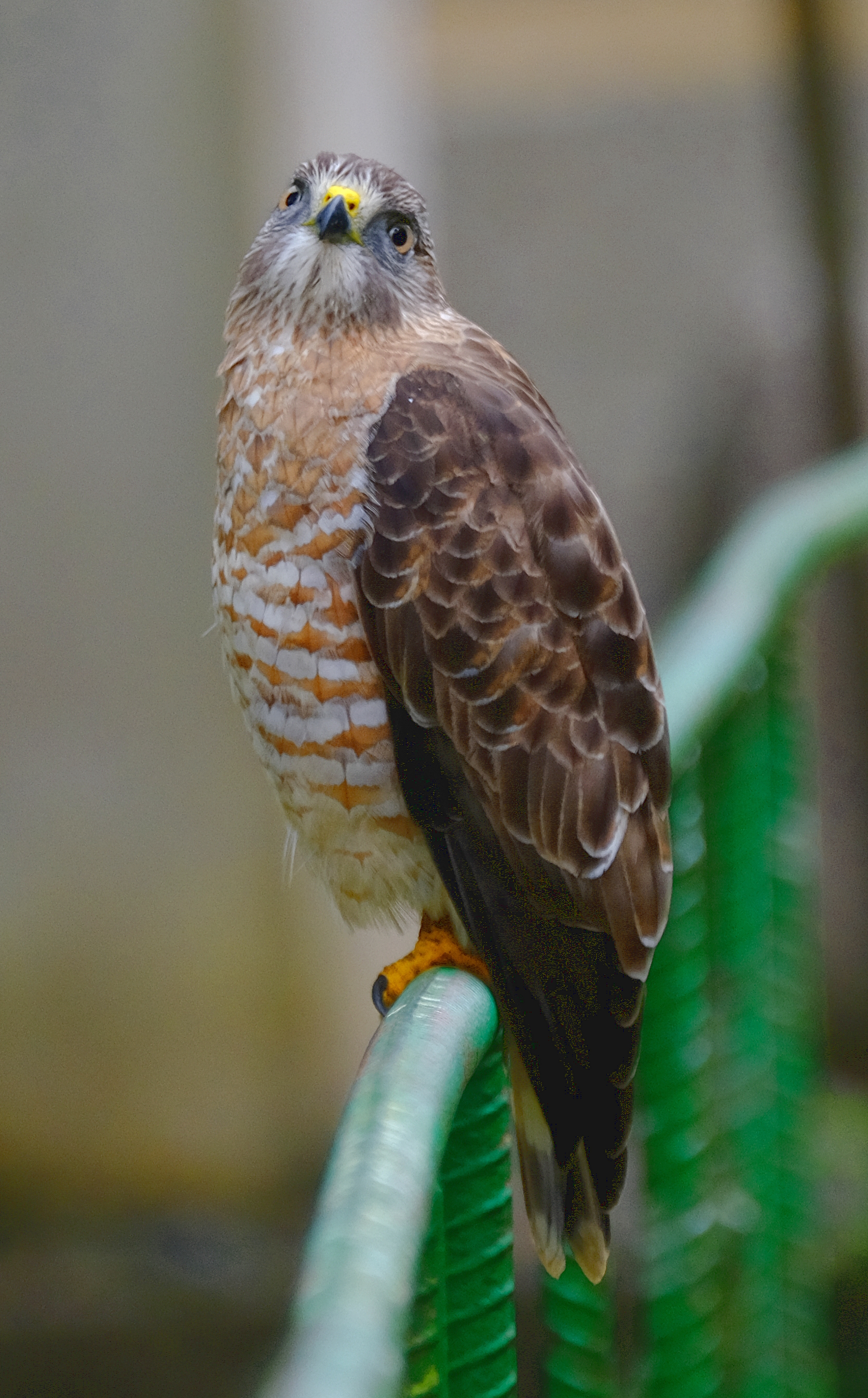In general I don’t like using Dave’s photos as references for my paintings - except when the photo is flawed in some way.. In this case the hawk in the photo was lopped off on the right side. But I loved the pose and used it as reference for this quick sketch. It was amazing to see this hawk up close on our trip through Panoche Valley.
White-crowned Sparrow
A 12” x 12” watercolor on wood panel
Here is a painting I did a couple of years ago. These are in the same genus (Zonotrichia) as the Rufous-collared that Dave photographed in Costa Rica. They are superabundant in our yard in the winter.
Rufous-collared Sparrow
Rufous-collared Sparrow
Rufous-collared Sparrow
This perky bird has an extensive geographic distribution, occurring from southern Mexico to the southernmost tip of South America. We encountered a small group of them at the entrance to Los Quetzales National Park, Costa Rica, which is located near Cerro de la Muerte, the mountain of death, on the Pan American Highway. Once you drive this stretch of road, the origin of the “mountain of death” becomes apparent. We observed these birds around 9,000-10,000 above sea level. It was a cold, blustery, gray day when I photographed them and I wished there was more light to work with, but their beauty stands out even so.
Silver-throated Tanager
Silver-throated Tanager. Photo Taken at Las Cruces Biological Station, Costa Rica (David Zittin 2018)
We ran into our first Silver-throated Tanager by accident when we saw something yellow flitting around in a nearby tree. We were amazed at its beauty. It’s namesake isn’t always apparent, the bright yellow head and the greenish wings with black lines catches the eye long before the silver throat.
Sandhill Cranes
One of the draws of driving to Merced National Wildlife Refuge is to see sandhill cranes. We did not see huge numbers as in past years but several groups were quite close. I love seeing the blue grey birds against dried grasses.
Yellow-billed Magpie
Yellow-bill Magpie (David Zittin, Santa Clara County 2019)
You don’t think much about the birds occurring where you live. This species only occurs in a small area of California. Whenever I run into someone who has come a long distance and is excited about seeing the Yellow-billed Magpie, it amazes me because they are just another local bird for me. The same occurs when I go bananas over encountering a Dickcissel in Texas or a Fish Crow in Florida. One man’s rarity is another’s common bird.
Its cousin, the Black-billed Magpie has a much wider distribution over several lower states in the west, Canada, and up into Alaska.
Mountain Plovers
The last three winters we have driven two hours to Panoche Valley to look for Mountain Plovers with no luck. But this year they were there! In fact there was a flock of over 80. In spite of having ‘mountain’ in their name these are birds of short grasslands and were once associated with bison herds.
Golden-hooded Tanager II
Golden-hooded Tanager (David Zittin, Costa Rica 2018)
I know I have posted this species earlier, but darn, it’s hard to get tired looking at such beauty. A few birds really take the breath from me when I encounter them in the field and this is one of those species.
Tanager sketches
Some quick sketches I did while Dave was photographing tanagers in Costa Rica.
Speckled Tanager: Eye Candy
It’s hard to describe the feeling that a birder has seeing one of these for the first time. They are strikingly beautiful with a color combination that takes the breath away from the viewer.
Speckled Tanager (David Zittin, Costa Rica 2018)
Speckled Tanager (David Zittin, Costa Rica 2018)
Scarlet Macaw
Scarlet Macaw Pair 12” x 6” acrylic on wood panel
This is also the first time I’ve tried painting a scarlet macaw! It was amazing to see them in the wild.
Lesson's Motmot
Lesson’s Motmot 12” x 6” acrylic on wood panel 2019
My first ever Motmot painting! This was inspired by a sketch I made in Costa Rica trip.
Red-eyed Tree Frog
Red-eyed Tree Frog
Costa Rica was not all birds, we did see some frogs. This one in particular is stunningly beautiful. I had a 100-400 mm zoom telephoto lens which was not ideal for this shot. I had to back up against a mud bank while Floy held the leaves back so I could get a clear shot.
Another Honeycreeper
I found a sketch of a third honeycreeper, the Shining Honeycreeper which we saw on a hike later in the Costa Rica trip.
More blue: Honey Creepers
Honeycreepers are common in Costa Rica. They are often seen at places where fruit is put out to attract birds.
The Green Honeycreeper male is blue, but the female is green.
The female Green Honeycreeper, unlike the male, is green.
Broad-winged Hawk
Walking across the Stone Bridge at the La Selva Research Station. I was more or less not paying attention to what was in front of me and you can imagine my surprise when I lifted my head and came eye to eye with an adult Broad-winged Hawk.
This hawk migrates across Costa Rica in large numbers and will flock with other hawks and Turkey Vultures. Some of these migrants will winter in Costa Rica and others keep going to locations further south.
Blues
Dave talked about blues which reminded me of a little sketch I did of Red Legged Honeycreepers and a Blue Morpho butterfly. Beautiful striking colors.
quick pen and ink and watercolor sketch by Floy Zittin
Golden-hooded Tanager
Golden-hooded Tanager eating fruit
(David Zittin, La Selva BIological Station, Costa Rica, 2018)
Golden-hooded Tanager
The Golden-hooded Tanage (Tangara larvata) is a neotropical bird mostly found in lowlands from Southern Mexico to Northwestern South America. As with other small, blue tropical birds, they catch the eye. The contrasting golden hood against blues and blacks makes this a neotropical delight. They are common around feeders and places where preferred food sources are found. Like many birds, they are opportunistic omnivores and will eat fruit and small arthropods.
Black-throated Trogon
Black-throated Trogons live mostly in dark forested areas of the American Tropics and can be difficult to photograph. Fortunately these two were cooperative. The one on the pipe rail just sat there and allowed me to approach to within about 20 feet. The one on the tree was next to a path and didn’t seem alarmed at my presence.
This trogon eats mostly insects, but will also take lizards and fruit.
Black-throated Trogon (David Zittin, Costa Rica 2018)
Black-throated Trogon (David Zittin, Costa Rica 2018)
Green Honeycreeper
This is a quick sketch of birds in the garden at La Selva, Costa Rica.
Sketch by Floy Zittin












